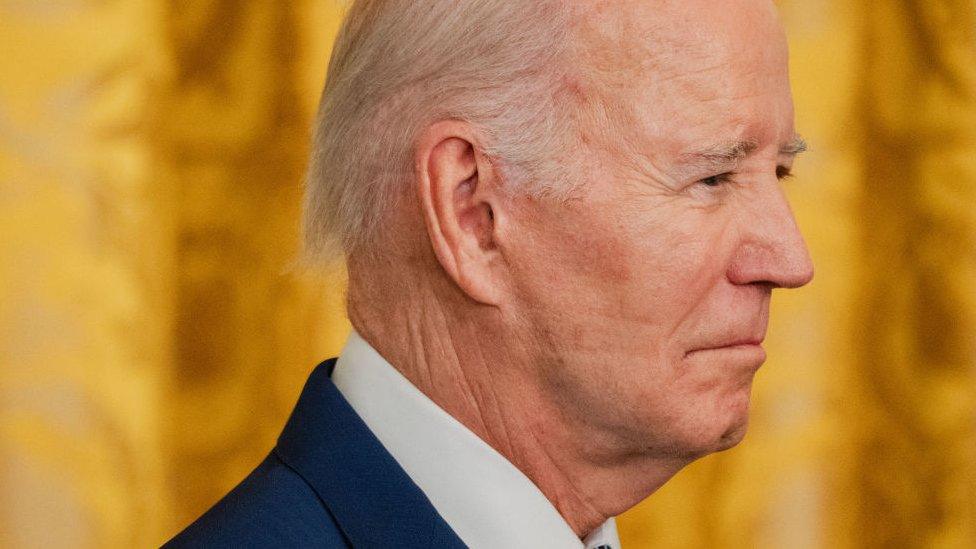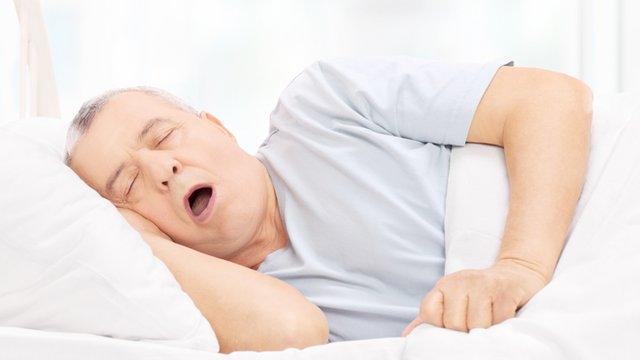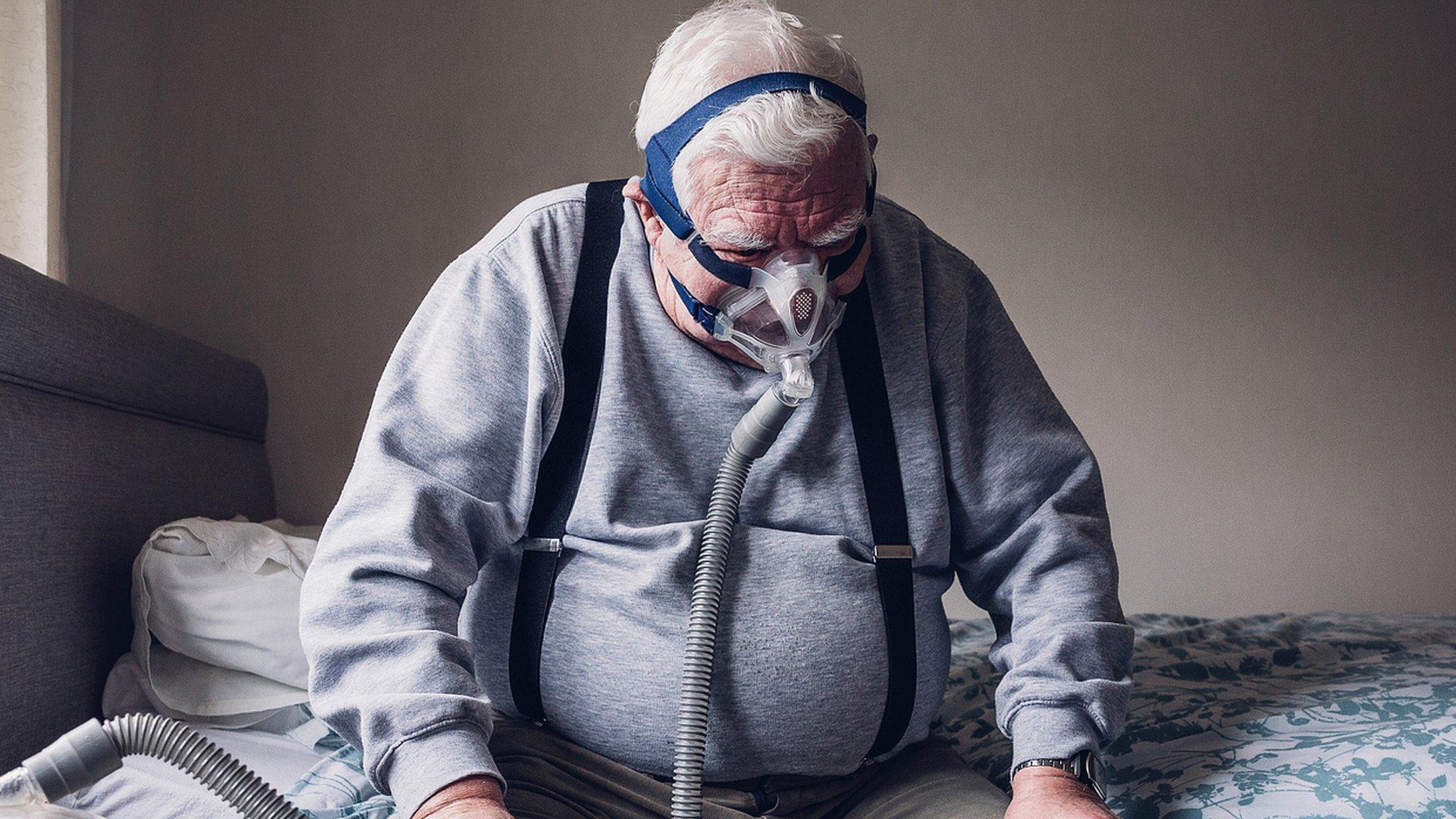President Biden using sleep apnoea treatment device, White House says
- Published

Biden was seen with marks on his face before officials disclosed his use of a CPAP machine
President Joe Biden is using a medical device to treat sleep apnoea, a common disorder in which breathing is interrupted repeatedly during sleep.
Mr Biden, 80, the oldest president in US history, is using a CPAP machine, according to the White House.
The medical announcement came on Wednesday after reporters spotted marks on his face - from the mask used to help him breathe at night.
About 30 million Americans have sleep apnoea, doctors say.
A CPAP (continuous positive airway pressure) device gently pumps air into a mask over the mouth and nose during sleep, holding the airways open.
"Since 2008, the President has disclosed his history with sleep apnea in thorough medical reports," White House spokesman Andrew Bates said in a statement.
"He used a CPAP machine last night, which is common for people with that history," he said.
White House officials later acknowledged that he had been using the CPAP machine for the last several weeks.
Sleep apnoea is one of the most prevalent sleep disorders in the world, with up to one billion people affected worldwide. Studies suggest that the condition increases with age, but sleep apnoea can also occur in young adults.
Its symptoms include episodes in which one temporarily stops breathing during sleep, gasping for air during sleep, loud snoring, and fatigue even after a full night's rest.
Doctors say this can result in poor memory and concentration, and the exhaustion causes a significantly higher risk of accidents.
People should consult their doctor if they have loud snoring, pauses in breathing at night, excessive daytime sleepiness or fatigue and sudden awakening at night, experts say.

How to control sleep apnoea
Try to lose weight if you are overweight
Sleep on your side - try a special pillow to help
Give up smoking
Do not drink too much alcohol, especially before bed
Don't take sleeping pills unless recommended
More serious sleep apnoea may need treatment from a sleep clinic. This can include using a CPAP machine, which gently pumps air into a mask over the mouth and nose during sleep, holding the airways open.
Source: NHS UK, external

Related topics
- Published10 January 2020

- Published16 April 2015

- Published13 March 2020
